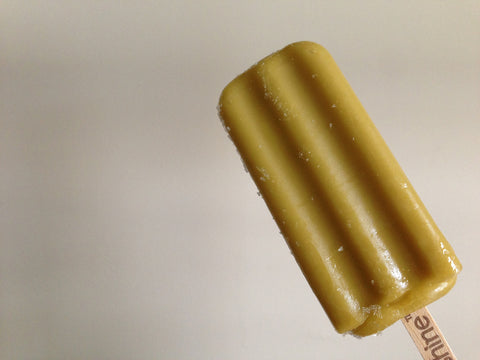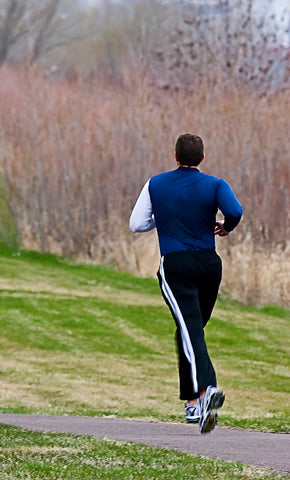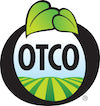
We know the benefits of exercise are plenty: from improved cardiovascular health to weight loss and brighter mood, even improving recovery from cancer. But what about boosting creativity?
According to Dr. Wendy Suzuki, a neuroscientist and professor at New York University and author of “Healthy Brain, Happy Life,“We know exercise can stimulate the growth of brand-new brain cells in the hippocampus, and because we know that the hippocampus is important for long-term memory and imagination, this suggests that exercise can improve not only memory function but our creativity as well,” she told Fox News.
It may be why taking a walk is often suggested when working on a problem—the movement can set loose some creative ideas, “It helps parts of the brain important for attention, for memory and for mood, and it does this by doing things like changing the anatomical structure of the brain— it actually increases the size of some of these areas, and enhances the physiological responses of these areas,” says Suzuki.
In her research, Suzuki looked at the effects of exercise on young people—students at NYU. Suzuki herself became a certified fitness instructor and began teaching what she calls “intentional exercise” where positive affirmations such as “I am strong!” or “I am powerful!” are shouted by the attendees during class.
“Each class was one hour of me teaching them aerobic exercise, followed by an hour and a half lecture discussion talking about and telling them about what exercise was doing to their brain,” she said.
Then, she tested their brains with memory-encoding tasks at the beginning and end of the course.
“I tested students on a challenging memory task that required them to differentiate between similar-looking objects in memory. I found that one semester of increased exercise in my class improved their response times for correctly answered questions. In other words, they answered correctly more quickly if they were in my exercise class compared to if they were not in the exercise class,” Suzuki said.
“Improvements in response times have been reported before, but this was unique because it was shown in a group of healthy young university students with just once a week of increased exercise. This suggests that if significant effects can be seen with this modest amount of exercise, then we might see even more striking effects if we got up to two to four times a week of increased exercise.”
Suzuki chose the young students because there hasn’t been much research done in this area on young people, but older people can also benefit from the brain boosting effects of exercise, she sys.
“You don’t have to be a triathlete to get the benefits of exercise on your brain. No matter what age you are, no matter what health status you are, you can get these benefits of exercise.”
Image: Lost Albatross

Don’t expect to do any dumpster diving outside French supermarkets anytime soon. That’s because the country has banned supermarkets from throwing out or otherwise destroying unsold food, reports the Guardian. The ban forces supermarkets to donate unsold food to charities for animal food.
“The French national assembly voted unanimously to pass the legislation as France battles an epidemic of wasted food that has highlighted the divide between giant food firms and people who are struggling to eat,” reports the Guardian.
French centre-right deputy Yves Jégo told parliament: “There’s an absolute urgency – charities are desperate for food. The most moving part of this law is that it opens us up to others who are suffering.”
Under the new rule, supermarkets larger than 4,305 square feet will have to sign contracts with charities that can take the market’s food waste, or face penalties including jail time. The stores have until July 2016 to sign contracts with organizations that work with distributing food donations to those in need.
“It’s scandalous to see bleach being poured into supermarket dustbins along with edible foods,” said the Socialist deputy Guillaume Garot, a former food minister who proposed the bill.
According to the Guardian, French media have highlighted “how poor families, students, unemployed or homeless people often stealthily forage in supermarket bins at night to feed themselves, able to survive on edible products which had been thrown out just as their best-before dates approached.”
But supermarkets have caught on, and began using methods to deter dumpster divers, such as using bleach in dumpsters or locking the food in warehouses until it can be picked up by trash collectors.
While the new law may make foraging more difficult for dumpster divers, there are other benefits to the French, including food waste educational programs that will be introduced to schools and business. According to the French government, the average resident tosses about 45-55 pounds of edible food per year, 15 pounds worth is still in its wrapping, reports the Guardian.
Image: carlos a martinez

It’s practically summertime and that means that it’s also the perfect time for ripe, savory guacamole recipes! Not just a dip for chips, guac is also a great spread on sandwiches and, of course, tacos and burritos. Mix some into your salads for a creamy touch to your dressing. And up your favorite guacamole recipe’s health benefits with organic greens!
Why add organic greens to guacamole?
Avocado, the main ingredient in guacamole, is loaded with healthy fats and fiber and plant protein (about 3 grams per average avocado!). Its rich natural creaminess lends itself well to the addition of nutrient-dense organic greens, like our own mustHave greens, which are loaded with alfalfa and oat grass, kale, spirulina and chlorella. These powdered give your guac a good nutritious boost, a bit more protein and a rich flavor. And of course, it takes the green color to the next level.
Summer Guacamole Recipe with Organic Greens
Prep 10 minutes to prepare
Makes about 3 cups
Ingredients
2 large, ripe Hass avocados
Juice of half of one large lime or entire small one
¼ cup chopped fresh cilantro
1/2 a jalapeño pepper, including seeds, finely chopped
1/4 tsp sea salt salt
1 tsp. dried organic greens
Directions
Once your avocadoes are perfectly ripe (and they can go from too firm to too soft in a few hours!), peel and seed them, putting the avocado flesh into a large bow.
Add lime juice and coat well and using a masher or a fork, mash until the avocado achieves the smooth consistency you like. If you like a really chunky avocado, you can reserve about ½ of one avocado, and cut that into small chunks and add into the rest of the mash.
Add in the remaining ingredients and mix well. Serve fresh. Recipe doubles or triples easily.
Guacamole recipe via Jürgen Stemper // Bloemche

Not only does regular exercise help in the prevention of some forms of cancer (and other life-threatening illnesses), but new research finds that it may also improve cancer outcomes in patients who exercise while battling cancer.
The research, published in a recent issue of the Journal of the National Cancer Institute, found that exercise, which increases blood flow to the muscles, actually helped to reduce the size of tumors in prostate cancer patients.
While excessive blood flow to tumors may sound unhealthy, like that could be providing more nourishment for the tumor to grow, the researchers say that’s not the case.
“When a tumor lacks oxygen, it releases just about every growth factor you can think of, which often results in metastasis,” Kansas State University exercise physiologist Brad Behnke explained to Runner’s World Newswire in an email. “Simply speaking, the tumor says, ‘I can’t breathe here, so let’s pick up and move somewhere else in the body.’”
And what the researchers noted was that the more oxygen produced as a direct result of exercising, the more cancer-fighting agents the body delivered to the site of the tumor. “For example, exercisers respond better to radiation treatments,” Runners World reported. “Exercise increases blood flow by increasing blood pumping and pressure, and by decreasing blood vessel constriction.”
These findings support other research that noted how aerobic exercise impacted cancer cells. According to the study, exercise helped tissue return to its pre-tumor state, “or forestall development of a more aggressive and dangerous cancer,” explained Runners World.
Of course, exercise might not be on the top of the list for someone undergoing cancer treatments such as chemotherapy, but there are additional benefits as well. Cancer often leads to episodes of prolonged depression, and exercise can play a healthy role in reducing the symptoms of anxiety and depression in cancer patients.

According to new data from the Bee Informed Partnership, bees are in trouble. Really big trouble. The group reports that a stunning 40 percent of honeybee hives died in the last year, marking the second-highest loss of hives on record.
“What we’re seeing with this bee problem is just a loud signal that there’s some bad thinkgs happening with our agro-ecosystems,” study co-author Keith Delaplane of the University of Georgia told the AP. “We just happen to notice it with the honeybee because they are so easy to count."
Colony collapse disorder—the mysterious condition that causes bees to become confused and abandon their hives before dying—has been pointed to as the leading cause of the bee decline by a number of experts, but it was not called out as the culprit in this case. The exact cause of the honeybee hive decline was not noted.
Bee researcher Dennis vanEngelsdorp called the situation “unheard of,” stating that commercial beekeepers “are now losing more colonies in the summertime compared to the winter.” It had long been the opposite, notes vanEngelsdorp, “We traditionally thought of winter losses as a more important indicator of health, because surviving the cold winter months is a crucial test for any bee colony.”
But it seems the challenges facing the nation’s bee populations knows no season, an indication of a more severe, widespread issue that many experts believe is the result of excessive pesticide use, most notably neonicotinoids, a class of pesticides that has been banned in the EU over concerns of its impact on bees and other pollinators.
According to USDA data, honeybees add more than $15 billion in value to country’s fruit and vegetable crops each year.
“If losses continue at the 33 percent level, it could threaten the economic viability of the bee population industry, the department said in a statement. “Honey bees would not disappear entirely, but the cost of honey bee pollination services would rise, and those increased costs would ultimately be passed on to consumers through higher food costs.”Image: Paul Rollings

It’s time to pull the popsicle molds out of the cupboard and get ready for a DIY popsicle recipe with organic greens!
If popsicles remind you of the sticky sweet treat of your youth, you’re about to have your cake, er, popsicle, and eat it too. And you don’t need a juicer to make these healthy popsicles, either. You can make this popsicle recipe in any old blender but with all the healthy goodness of organic greens.
What’s extra great about this recipe is that if you have a hard time getting green juices down, you’ll find them much more palatable (and soothing on a hot day!) as popsicles. That’s because the intensity of the greens is offset by the coolness of the frozen treat, and there’s just enough sweetness from the fruits to make it taste a bit more like your favorite frozen treat from long ago. Plus, you've got that gorgeous neon color your inner child will be happy to see again.
If you don’t have popsicle molds, you can use ice cube trays or even paper cups. You will need popsicle sticks though.
Ingredients
1 cup water
2 green apples, chopped
1 cup diced pineapple
Heaping handful of fresh berries of your choice
1 medium cucumber, quartered
1 heaping teaspoon organic greens (such as our own mustHave greens)
2 Tablespoons agave nectar (optional)
Directions
Add all ingredients to blender and blend until smooth—almost the consistency of a smoothie. Pour into popsicle molds. Place in freezer. After about a half hour, while the popsicles are partially frozen, insert popsicle sticks so they are positioned upright and straight. Freeze overnight or until frozen all the way through (about five hours, depending on size of mold).
To remove popsicles from their molds, place the molds into warm water (careful not to get water on the open side of the molds). Popsicles should pop out with little effort.
Optional: If you don’t want any fruit pulp in your popsicle, you can strain the blended ingredients before pouring into the molds.
Image: Romana Klee

The U.S. is taking bigger steps towards more clean energy. In order to comply with new EPA regulations known as the Mercury and Air Toxics Standards, a number of coal plants will be shutting down. According to Treehugger, already this year some 4,600 megawatts of coal has been pulled from the grid, with another 7,700 to follow by year’s end—a total of 12.3 gigawatts or about 1/3 of all coal shut downs since 2010.
“This year's closures represent about 4% of installed U.S. coal capacity and will make up a third of nationwide coal plant retirements between 2010 and 2015,” SNL reports.
While this is good news for the environment and human health, the closings slow down after that.
“The pace of retirements eases in 2016, when units with one-year MATS compliance extensions finally close. Next year, nearly 7,300 MW of coal-based power will shut down. Retirements continue to taper off after that, with less than 7,000 MW slated between 2017 and 2022,” reports SNL. But says Treehugger, “Hopefully by then more will be added to the list.”
And even though things may be slowing down for taking coal off the grid, compliance with MATS means 46,000 megawatts of coal removed from production in the U.S. (by 2022).
“And the coal plants that will remain behind, while far from green, at least won't be quite as bad as the ones that are going away,” reports Treehugger. “The average age of units closing between now and 2022 is 56 years, meaning that many are less efficient and have fewer environmental controls than the surviving coal fleet.”
So what will be replacing coal? “Of the nearly 26,400 MW of coal capacity closed or closing between 2015 and 2022, about 40% will be converted to burn other fuels, mainly natural gas,” reports SNL. “A little over 11,000 MW of the retiring units will switch to gas, with a much smaller 335 MW converting to burn oil and 58 MW to biomass.”
And there’s more good news, according to SNL. There could be even more coal closures after the EPA delivers its final ruling for reduced carbon emissions in the power sector. “The agency's Clean Power Plan for existing plants sets state-specific greenhouse gas intensity reduction targets that are estimated to cut emissions by 30% from 2005 levels by 2030.”
Image via eutrophication&hypoxia

Even die-hard fast food fans know by now that it isn’t a healthy diet move. The saturated fat, the excess salt, sugar and likelihood of artificial ingredients all increase your risk of developing a number of health issues, especially if you consume fast food regularly.
And now, there’s even more compelling evidence for avoiding the stuff. According to new research, regularly eating fast food for just one week can kill as much as one-third of the healthy gut bacteria, crucial not just for digestive function, but also for boosting immune function, helping to breakdown and absorb nutrients and play other critical roles in the body’s health, including maintaining a healthy weight.
Shape MagazineThe new study, led by Tim Spector, Ph.D, author of “The Diet Myth,” put his own son under the microscope. According to , Spector’s son ate fast food exclusively for one week. At the onset of the study, his son’s microbial count was at about 3,500 different types of bacterial species. At the end of the week—and to the shock of most everyone involved in the study—Spector’s son’s microbial diversity had dropped to just 1,300 species. Not only that, there was a new dominant strain of bacteria called bacteroidetes in his son’s digestive system, which had been formerly dominated by a type called firmicutes.
"Changes in our gut microbe community, or microbiome, are likely to be responsible for much of the obesity epidemic, and consequences like diabetes, cancer and heart disease," Spector wrote. "It is clear that the more diverse your diet, the more diverse your microbes and the better your health at any age."
Spector’s study demonstrates the need for more comprehensive research into the issue of how fast food items can alter gut bacteria. It’s also a healthy reminder about the importance of eating probiotic-rich foods, such as yogurts, cultured products like sauerkraut, kimchi and miso paste, all of which help to build friendly gut bacteria.
Image: sporkist

Spring is in full swing across the Northern hemisphere and that can only mean one thing: allergies. Sure, the warm weather and gorgeous flowers make everything a little less unbearable, but no one wants uncontrollable sneezing, itchy eyes and trouble breathing until the snow comes back! This DIY allergy elixir recipe with organic greens can help bring relief, fast.
Loaded with healthy goodness, including nutrient rich fresh fruits, allergy-suppressing nettles and our own organic green powder (mustHave greens), this scrumptious concoction is sure to help bring some seasonal relief to your hay fever.
Nettles are prized for their natural antihistamine effects. In addition to the elixir recipe below, you can also use nettle extracts or supplements to aid in your allergy relief. Note though that nettles also act as a diuretic, so you want to make sure you’re replacing fluids throughout the day.
Organic greens help boost immune response and suppress inflammation, which most allergies trigger. Our mustHave greens are loaded with spirulina, which a double-blind 2008 study found to be clinically effective on treating allergies when compared with placebo. According to the study abstract, consumption of spirulina significantly improved common symptoms of allergies including nasal discharges, sneezing, congestion and itching.
Ingredients
2 cups nettle tea
½ cup fresh pineapple, chopped
1 blood orange, peeled
¼ cup fresh ginger root, grated or chopped fine
1 teaspoon powdered organic greens, like our mustHave greens
1 teaspoon chia seeds soaked in 3 teaspoons water for 10 minutes
½ cup frozen blueberries or ice cubes
Honey or sweetener of choice as desired
Directions
Brew your nettle tea according to package directions. Let steep and cool for several hours or overnight.
Combine all ingredients in a blender until smooth. Serve immediately.
Image: mealmakeovermoms

A recent study points to yet another benefit of making aerobic exercise a part of a regular fitness routine—especially for men: It may help delay the onset of age-related high cholesterol.
The study, published in the Journal of the American College of Cardiology, followed more than 11,000 men between 1970 and 2006. Samples of the subjects’ blood were taken and the men were also asked to perform aerobic exercise, such as taking a run on a treadmill. According to Reuters, “Men who could run longer and faster – signs that their bodies more easily deliver oxygen to muscles – also had lower cholesterol.”
The men who performed better on the fitness tests were more likely to also have lower total cholesterol levels, as well as lower levels of low-density lipoprotein (LDL), or “the bad kind of cholesterol” that can build-up in blood vessels and may cause blood clots and heart attacks.
The healthier subjects also showed higher levels of high-density lipoprotein (HDL), or “the good kind of cholesterol” that’s essential in maintaining lower levels of LDL cholesterol.
"The benefits of physical fitness in improving cholesterol levels are greatest in young to middle-age adults and tend to decrease gradually with older age," said Dr. Usman Baber, a cardiovascular researcher at the Icahn School of Medicine at Mount Sinai in New York City.
"These findings should reinforce the importance of young to middle-age men incorporating regular aerobic exercise as part of a healthy lifestyle," Baber, co-author of an editorial accompanying the study in the Journal of the American College of Cardiology, said in an email to Reuters Health.
According to Reuters, to achieve the fitness levels necessary to ward off age-related high cholesterol, “men should get 150 minutes a week of moderate activity or 75 minutes of vigorous activity…These activities might include walking, running, swimming or cycling.”
Exercise image via chefranden


